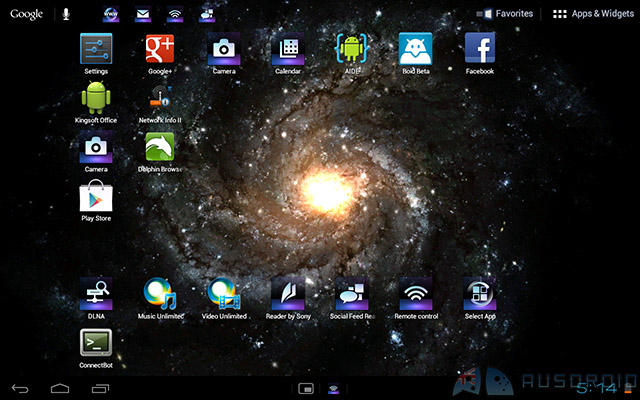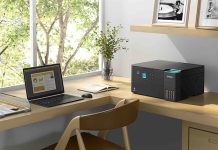
Over the last 12 months my concerns for the long term viability of Android as a tablet operating system have grown, now with Microsoft entering the Tablet war my fears for Android in this form factor have boiled over. For those of us who are Android enthusiasts the theory of an Android tablet is an exciting thing. But when it comes to the crunch, there are many people (like myself) who are Android enthusiasts that don’t have an Android tablet but in preference to the Android offerings use an iPad as their daily driver tablet: why?
There are any number of reasons that this could be happening — there’s the fact Android Tablets are so disparate in the experience they offer.
You can spend under $150.00 with one of the low-end Korean manufacturers that import into Australia and get a tablet that’s really only good for email and a bit of web surfing. You’ll only get a single core processor, it’s extremely unlikely to support 3G services in any way which may restrict your use if you’re tied to WiFi connectivity only. I strongly suggest you don’t bother with games, you’ll only be disappointed. Although this is not going to be suitable for some users, for many users this will be quite acceptable performance for their needs.
You can spend around the $500.00 – $650.00 range and get a decent dual core tablet that’s 10.1″, 16 or 32GB with options for 3G or WiFi only and a hardware generation old. Don’t get me wrong, these aren’t disappointing for the expectation of reasonable performance but: They’re essentially a generation old and very few of them have official updates to the current version of Android 4.0 Ice Cream Sandwich.
You can move into the $700.00 – $900.00 range and get the current flagship devices for the Android Tablet platform, including accessories like the Keyboard Dock if you purchase the Asus Transformer Prime. They’re really nice devices with 3G, 16, 32 and in some cases 64GB options, good battery life and dual core hardware. Still making them a generation old with most of them yet to offer an Official ICS update.
What’s the problem?
Directly, most users will probably find a tablet that will suit their needs and probably inside their budget. But let’s look at the numbers in very basic form: Having been charged with the task of researching current offerings on tablets recently for my paid employer the final decision basically came down to this – for around the $400.00 mark you’ll get an iPad 2, 16GB with WiFi which essentially matches the offerings in the Android $500.00 – $600 range and is comparative in specs and are both 1 generation old, therefore the “mainstream” options for each platform.
Where’s the consistency?
For the same dollars you can get 3 different tablets that will give you 3 totally different user experiences. Some of these are great experiences, some are disastrous experiences. There’s no doubt that “First impressions last” and many of the users who have bad experiences don’t have the knowledge or experience to distinguish between hardware and software issues, and as a by-product of this, blame “Android” for their poor experience.
Who do the hardware manufacturers answer to for the performance of their device using the Android Operating System?
Why are devices that are considered current, not running the current version of the OS?
This is a talking point for the fanboys and has spawned literally hundreds, if not more Android bashing posts. The premise that recently released hardware has generation old software on it which doesn’t necessarily offer the best user experience is horrid. There’s some really nice tablets out there that simply get lost in the seemingly endless piles of dual core, 16/32GB Honeycomb Tablets and until the release of the Galaxy Tab 2 none have differentiated themselves by releasing the device armed with Ice Cream Sandwich out of the box.
Here we are again, back at that nasty “F” word that has plagued Android as a platform for quite some time: Fragmentation.
What can Google do?
Despite the start of this article, there are heaps of positives to come out of the Android tablet market that makes me very positive for the future.
The Nexus platform is not Android’s salvation, more a starting point. Google have made it public that they’re not just riding the wave and hoping that Tablets are successful because of the mobile platform success. This is most evident with the recent session list for the upcoming Google I/O that has a strong focus on dual interface design.
One of the most positive factors of owning an Android Tablet is that you’re not locked into using iTunes — possibly the worst piece of software ever installed onto a Windows PC. Adding to the iOS vs Android ammunition: I love my widgets! I’d love to see iOS 6 have widgets because in my opinion, and that of many other Android users, after following suit on better notifications, the day iOS adds widgets is the day we can say Android is right up there — if not better in some aspects — with iOS.
Ignoring the obvious flaws in the hardware, there is a huge market for cheap tablets. Look at the success of the recent Aldi tablets, the previous success of the HP Touchpads and the buzz that has been created around the upcoming Kogan Agora and Nexus tablets which are both expected to launch under $200.00 at a retail level. In this cheap tablet buying market, a large majority of users are first time buyers whose expectations vary greatly but don’t necessarily include the requirement for playing games or higher end requirements, they want to surf the web and do their email on the couch rather than have to fire up their PC or have their laptop with them all the time.
Until a time where Android as a platform offers consistency, cost effectiveness, integrated experience and the out of box experience you can find on the iPad I’ll be sticking with my iPad as a daily driver. If things continue the way they are currently, I might be shopping for a new tablet soon!
Image thanks to Adam Ricket





